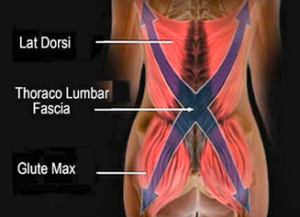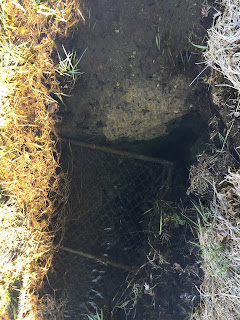For the last year, life has been in soccer mode. Three brothers have fell in love with the sport, and suddenly it seems that half of my week is spent at the pitch. I'm not complaining. There is much to be enjoyed and learned.
I have a ways to go in understanding the nuances of strategy and technical skill. But I've trained and rehabbed a fair share of soccer players. I have studied physiology and all-out lived athletics since before I can remember. I know some things about helping athletes to stay healthy and improve performance.
I'm on threshold of soccer culture, devoted, but not yet fully immersed. It's a good perspective from which to pause and make note.
Here are 5 training consideration for soccer players (and their parents).
1. Game Changers are Like Lightening.
In soccer, like many sports, the moves of precision and power change games. The best players are fast on the fly and accelerate quickly in all directions. They create separation from other players, fill gaps, and close angles.
Of course, endurance is also important. Endurance is usually required for the athlete to be in a position to display precision and power. The best players repeatedly put on powerful starts, stops, and runs. The average player covers four to six miles in a 90-minute game. I would argue that sufficient endurance is relatively easy to achieve. And being that the far majority of actual in-match sprints are less than five seconds, athletes should devote more effort to improving peak speed and acceleration. It is my opinion that many high level soccer players are the ones able to maintain powerful speed and quickness despite all the endurance work they are put through.
But how does improvement in speed and quickness occur?
It does not happen through running timed miles, 120s, the beep test, or through cross training death circuits. I understand that these (and similar tests) are a common means for coaches to gauge an athlete's fitness level and separate the devoted, hardworking athletes from those who don't truly want to be there. But...
The effort may be somewhat misplaces. These methods are not the best ways for a given athlete to truly improve their peak speed and multidirectional acceleration.
In soccer, sustaining mediocre speed and acceleration for a full 90-minutes will usually get you beat. I understand the need for a preseason gauge of fitness and self descipline. But as far as physical demands, the bulk of training and some of the fitness tests should reflect the demands of the sport.
 |
| Loc walking with 190 lbs. For soccer. |
2. Strength is important
Prominent sprinting coaches emphasize that while running technique has some role in improved sprinting, the critical element in peak speed and acceleration is being able to apply great amounts of force into the ground. The absolute best way to do this is through properly designed and implemented strength training programs.
[For example: "Speed, as it turns out, may be misunderstood. Running fast has more to do with the force one applies to the ground than how quickly one can move the legs."]
Strength training improves lower extremity power and functional core strength. When this occurs without a drastic change in body mass, this directly translates to improved running economy and endurance. Proper training for soccer should not look like bodybuilding or competitive fitness events. Depending on the needs of an individual athlete, the training can be geared toward increasing strength and size versus power and neurological efficiency.
Upper body strength is also important. We are not seeking huge upper body swole muscle pump, which easily works against the athletes relative lower body endurance. But powerful shoulders help the athlete doll out and receive contact. A strong and stable core allows the athlete to leverage the hips for safe and efficient total body acceleration and deceleration. Strength training the core well requires more than a few sets of sit-ups and planks.
3. The foundation is important
More than fifteen years as a physical therapist has shown me that the far majority of athletes leave something "on the table" when it comes to performance. They may be strong but lack endurance or flexibility. They may be flexible but display poor control of fast movement. Their "slow footedness" has more to do with hip weakness than anything with the feet. They can static plank all day but the core is clearly weak when challenged to maintain alignment in functional positions. I could go on with examples.
| Pepe HATES quality movement ; ) |
Most athletes will perform better and avoid injury by devoting some time to improving movement quality. They need to learn, in a slow and controlled environment, what proper alignment and movement quality feel like before reaping greater benefit of the more aggressive speed and power training.
Without the foundation, playing and training with frequency and intensity is a recipe for injury.Identifying individual weaknesses and teaching the athlete how to improve the quality of their movement is usually fairly straightforward. But it's not directly related to soccer and does not make for good Instagram photos. And so athletes often altogether miss this step.
4. Recovery is important
It seems that now more then ever, sports take place four seasons per year. There are certainly benefits to this. But what would happen if the athlete spent four months of focused effort on physical preparation, identifying and addressing their weak areas?
But who has time for that? Pre season rightly demands a TON of running. The competitive season games and practices entail a lot of running. And the off season is spent doing intense running, in fear of missing the mark on the beep test, the sub 5-minute mile, and other tests heavily focused on endurance.
Most athletes have no interest in something as unglamorous as recovery. They want to work every day to get ahead. Until the knee tendonitis, the ligament sprain and tears, the shin splints, and the Severs (heel) pain hits them...and fails to get better with rest and ice.
Appropriate corrective exercise and strength training is a great way to be productive toward soccer performance while providing recovery from the actual impact demands of the sport. Again, I'm referring to well designed and implemented training with focused effort, and NOT epic weight training sessions that leave the athlete exhausted and sore.
It seems that now more then ever, sports take place four seasons per year. There are certainly benefits to this. But what would happen if the athlete spent four months of focused effort on physical preparation, identifying and addressing their weak areas?
But who has time for that? Pre season rightly demands a TON of running. The competitive season games and practices entail a lot of running. And the off season is spent doing intense running, in fear of missing the mark on the beep test, the sub 5-minute mile, and other tests heavily focused on endurance.
Most athletes have no interest in something as unglamorous as recovery. They want to work every day to get ahead. Until the knee tendonitis, the ligament sprain and tears, the shin splints, and the Severs (heel) pain hits them...and fails to get better with rest and ice.
Appropriate corrective exercise and strength training is a great way to be productive toward soccer performance while providing recovery from the actual impact demands of the sport. Again, I'm referring to well designed and implemented training with focused effort, and NOT epic weight training sessions that leave the athlete exhausted and sore.
5. Rethink "sport-specific"
The traditional way of thinking about strength training for endurance sports is to use high reps and lower resistance. But most soccer players already possess far more than adequate endurance. For these athletes, high repetition, interval weight training is an insufficient stimulus to further improve their on-the-field power or endurance.
 |
| Usually not a great use of time. |
Another common training error is to add resistance to the actual movements that occur in the sport, for example, kicking with weights or resistance tubing attached to the leg. But exercise does not need to replicate the exact mechanics of playing the sport. For example, a strong kick and fast sprint requires powerful hip flexors. But doing straight leg raises and kicking drills with tubing or cuff weights strapped to the ankles offers practically no benefit and are great ways to cause injury.
Training that's metabolically and mechanically complimentary to the sport offers the greatest benefit.
Using relatively heavy resistance demands the brain to move
with greater efficiency. Heavy lifts done well challenge the
entire athlete to maintain good posture and stabilize torque throughout multiple
body segments.
What qualifies as "heavy resistance" is definitely relative to the individual athlete. Most soccer players would benefit by gradually working their way into powerful, total body movements of low repetition and relatively high resistance.
Then, they may take a solid, powerful machine into the pre-season, condition for power-endurance, go out there and tear it up!










